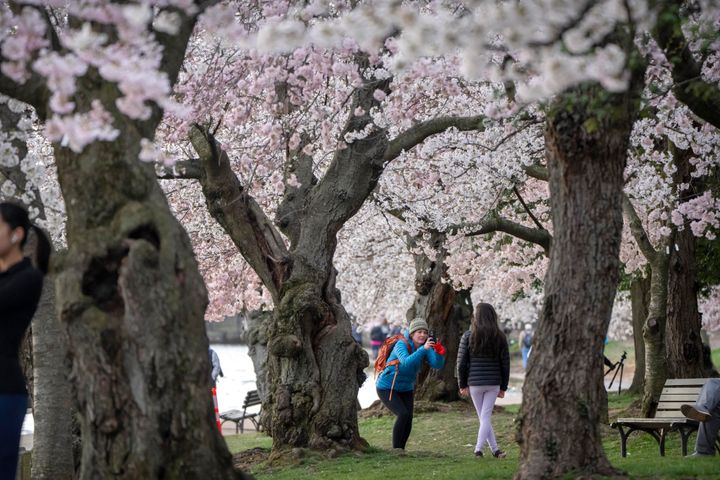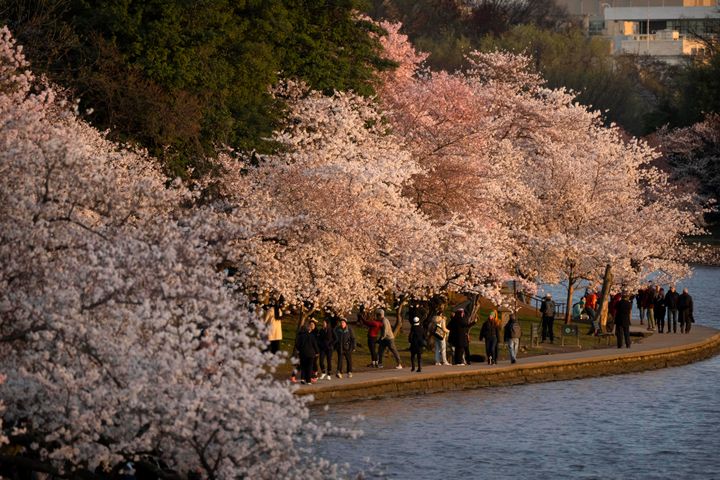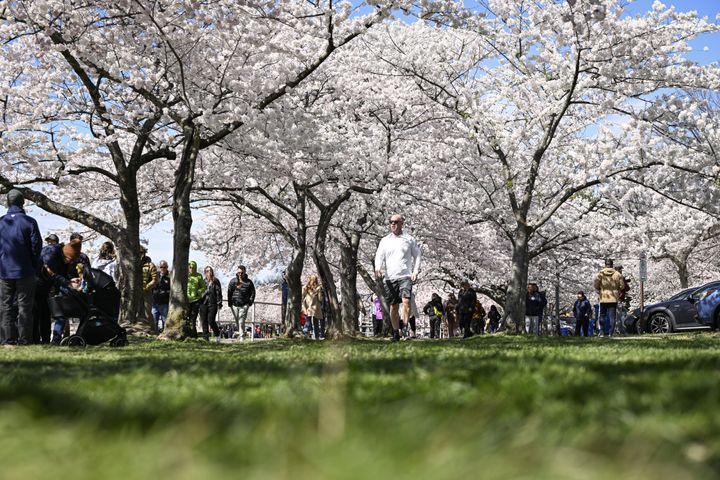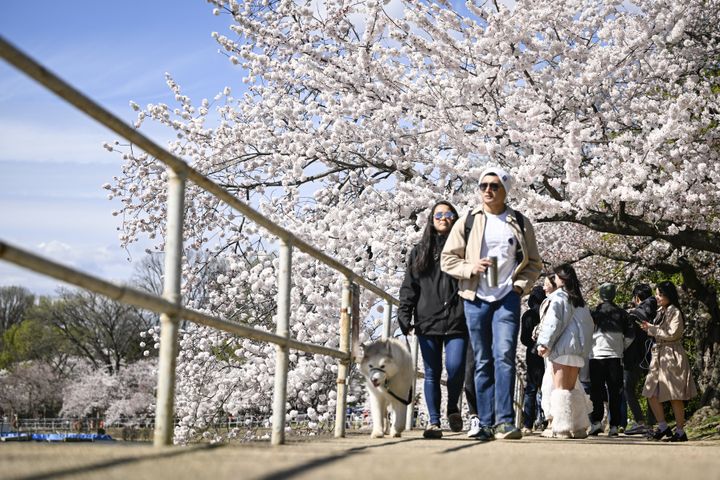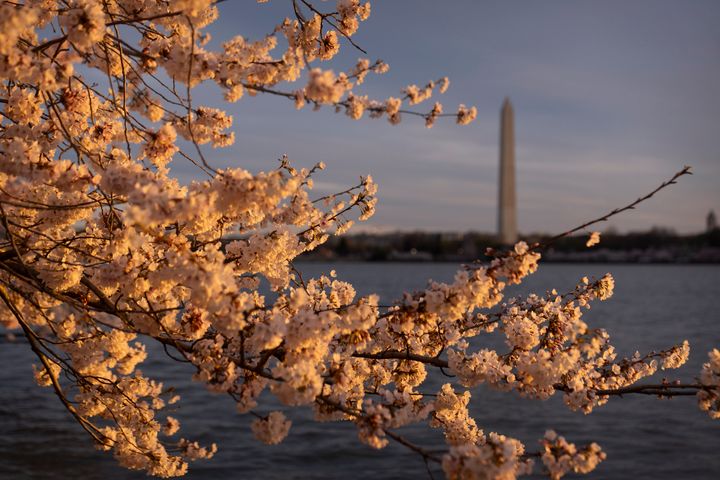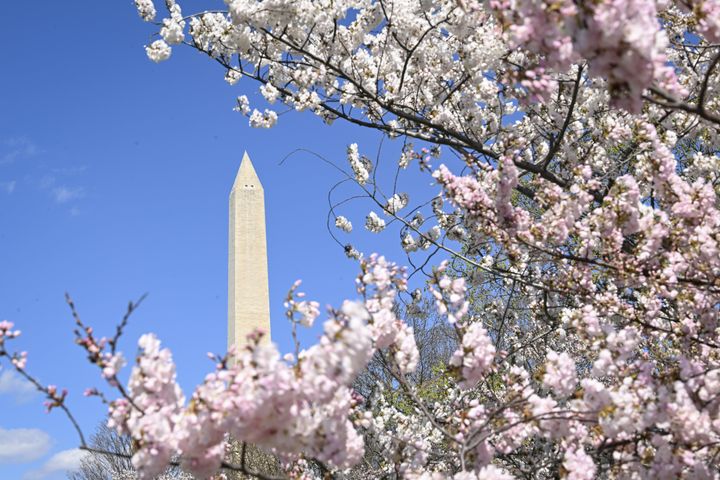
Washington, D.C., is in full bloom, likely thanks to climate change.
This year, the peak bloom was expected between March 23 and March 26, but instead occurred on Sunday, according to the National Park Service. This year’s peak bloom occurred the earliest it has in more than two decades, CBS News reported. It has also landed its spot as the second-earliest peak bloom ever recorded, according to CNN.
Given that weather plays a role in the timing of the blooming period, climate change could also impact the blooming season. Climate Central, an organization focused on climate change, predicts the occurrence could start as soon as the first week of March between 2070 and 2100.
“PEAK BLOOM! PEAK BLOOM! PEAK BLOOM! Did we say PEAK BLOOM?!” the National Parks Service wrote in posts on multiple social media platforms. “The blossoms are opening & putting on a splendid spring spectacle.”
The service’s website said that the occasion is characterized by the blooming of 70% of the Yoshino Cherry blossoms, which Japan gifted to the U.S. in 1912. Since then, D.C.’s Cherry Blossom Festival has become a celebration, attracting hundreds of thousands of people annually.
Peak bloom most often occurs between March’s final week and April’s first week, but the occasion has also happened as early as March 15 in 1990 and as late as April 18 in 1958, the NPS site added.
It’s unclear how long this year’s bloom will last, but last year’s lasted for about a week, CBS also reported.
“The length of the blooming period depends on weather conditions. Cool, calm weather can extend the length of the bloom, and a rainy, windy day can bring an abrupt end to the ephemeral blossoms,” NPS’s website continued. “A late frost can prevent the trees from blooming at all.”
This year, D.C. experienced above-average temperatures in both January and March, ahead of the early peak bloom, CBS News reported, citing Weather Underground.
Likewise, the blooming in Japan has increased by 1.2 days per decade in “correlation” with rising temperatures, CBS News also reported, citing a climate expert at the Japan Meteorological Agency.
Check out D.C.’s early cherry blossom bloom in the photos below.
